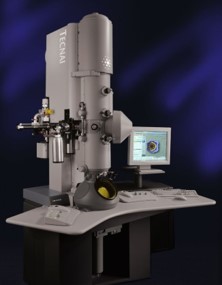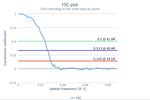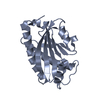[English] 日本語
 Yorodumi
Yorodumi- EMDB-5912: Cryo-electron tomography map of Leptospira interrogans flagellar motor -
+ Open data
Open data
- Basic information
Basic information
| Entry | Database: EMDB / ID: EMD-5912 | |||||||||
|---|---|---|---|---|---|---|---|---|---|---|
| Title | Cryo-electron tomography map of Leptospira interrogans flagellar motor | |||||||||
 Map data Map data | Reconstruction of Leptospira interrogans flagellar motor | |||||||||
 Sample Sample |
| |||||||||
 Keywords Keywords | flagellar motor / C ring / stator / Leptospira interrogans | |||||||||
| Biological species |  Leptospira interrogans (bacteria) Leptospira interrogans (bacteria) | |||||||||
| Method | subtomogram averaging / cryo EM / Resolution: 41.0 Å | |||||||||
 Authors Authors | Zhao XW / Norris SJ / Liu J | |||||||||
 Citation Citation | Journal: J Bacteriol / Year: 2012 Title: Three-dimensional structures of pathogenic and saprophytic Leptospira species revealed by cryo-electron tomography. Authors: Gianmarco Raddi / Dustin R Morado / Jie Yan / David A Haake / X Frank Yang / Jun Liu /  Abstract: Leptospira interrogans is the primary causative agent of the most widespread zoonotic disease, leptospirosis. An in-depth structural characterization of L. interrogans is needed to understand its ...Leptospira interrogans is the primary causative agent of the most widespread zoonotic disease, leptospirosis. An in-depth structural characterization of L. interrogans is needed to understand its biology and pathogenesis. In this study, cryo-electron tomography (cryo-ET) was used to compare pathogenic and saprophytic species and examine the unique morphological features of this group of bacteria. Specifically, our study revealed a structural difference between the cell envelopes of L. interrogans and Leptospira biflexa involving variations in the lipopolysaccharide (LPS) layer. Through cryo-ET and subvolume averaging, we determined the first three-dimensional (3-D) structure of the flagellar motor of leptospira, with novel features in the flagellar C ring, export apparatus, and stator. Together with direct visualization of chemoreceptor arrays, DNA packing, periplasmic filaments, spherical cytoplasmic bodies, and a unique "cap" at the cell end, this report provides structural insights into these fascinating Leptospira species. | |||||||||
| History |
|
- Structure visualization
Structure visualization
| Movie |
 Movie viewer Movie viewer |
|---|---|
| Structure viewer | EM map:  SurfView SurfView Molmil Molmil Jmol/JSmol Jmol/JSmol |
| Supplemental images |
- Downloads & links
Downloads & links
-EMDB archive
| Map data |  emd_5912.map.gz emd_5912.map.gz | 45.9 MB |  EMDB map data format EMDB map data format | |
|---|---|---|---|---|
| Header (meta data) |  emd-5912-v30.xml emd-5912-v30.xml emd-5912.xml emd-5912.xml | 9.8 KB 9.8 KB | Display Display |  EMDB header EMDB header |
| FSC (resolution estimation) |  emd_5912_fsc.xml emd_5912_fsc.xml | 7.6 KB | Display |  FSC data file FSC data file |
| Images |  emd_5912.jpeg emd_5912.jpeg emd_5912.tif emd_5912.tif | 82.8 KB 367.9 KB | ||
| Archive directory |  http://ftp.pdbj.org/pub/emdb/structures/EMD-5912 http://ftp.pdbj.org/pub/emdb/structures/EMD-5912 ftp://ftp.pdbj.org/pub/emdb/structures/EMD-5912 ftp://ftp.pdbj.org/pub/emdb/structures/EMD-5912 | HTTPS FTP |
-Validation report
| Summary document |  emd_5912_validation.pdf.gz emd_5912_validation.pdf.gz | 78 KB | Display |  EMDB validaton report EMDB validaton report |
|---|---|---|---|---|
| Full document |  emd_5912_full_validation.pdf.gz emd_5912_full_validation.pdf.gz | 77.1 KB | Display | |
| Data in XML |  emd_5912_validation.xml.gz emd_5912_validation.xml.gz | 492 B | Display | |
| Arichive directory |  https://ftp.pdbj.org/pub/emdb/validation_reports/EMD-5912 https://ftp.pdbj.org/pub/emdb/validation_reports/EMD-5912 ftp://ftp.pdbj.org/pub/emdb/validation_reports/EMD-5912 ftp://ftp.pdbj.org/pub/emdb/validation_reports/EMD-5912 | HTTPS FTP |
-Related structure data
- Links
Links
| EMDB pages |  EMDB (EBI/PDBe) / EMDB (EBI/PDBe) /  EMDataResource EMDataResource |
|---|
- Map
Map
| File |  Download / File: emd_5912.map.gz / Format: CCP4 / Size: 122.1 MB / Type: IMAGE STORED AS FLOATING POINT NUMBER (4 BYTES) Download / File: emd_5912.map.gz / Format: CCP4 / Size: 122.1 MB / Type: IMAGE STORED AS FLOATING POINT NUMBER (4 BYTES) | ||||||||||||||||||||||||||||||||||||||||||||||||||||||||||||||||||||
|---|---|---|---|---|---|---|---|---|---|---|---|---|---|---|---|---|---|---|---|---|---|---|---|---|---|---|---|---|---|---|---|---|---|---|---|---|---|---|---|---|---|---|---|---|---|---|---|---|---|---|---|---|---|---|---|---|---|---|---|---|---|---|---|---|---|---|---|---|---|
| Annotation | Reconstruction of Leptospira interrogans flagellar motor | ||||||||||||||||||||||||||||||||||||||||||||||||||||||||||||||||||||
| Projections & slices | Image control
Images are generated by Spider. | ||||||||||||||||||||||||||||||||||||||||||||||||||||||||||||||||||||
| Voxel size | X=Y=Z: 5.7 Å | ||||||||||||||||||||||||||||||||||||||||||||||||||||||||||||||||||||
| Density |
| ||||||||||||||||||||||||||||||||||||||||||||||||||||||||||||||||||||
| Symmetry | Space group: 1 | ||||||||||||||||||||||||||||||||||||||||||||||||||||||||||||||||||||
| Details | EMDB XML:
CCP4 map header:
| ||||||||||||||||||||||||||||||||||||||||||||||||||||||||||||||||||||
-Supplemental data
- Sample components
Sample components
-Entire : Leptospira interrogans flagellar motor
| Entire | Name: Leptospira interrogans flagellar motor |
|---|---|
| Components |
|
-Supramolecule #1000: Leptospira interrogans flagellar motor
| Supramolecule | Name: Leptospira interrogans flagellar motor / type: sample / ID: 1000 / Number unique components: 1 |
|---|
-Supramolecule #1: FliY
| Supramolecule | Name: FliY / type: organelle_or_cellular_component / ID: 1 / Recombinant expression: No / Database: NCBI |
|---|---|
| Source (natural) | Organism:  Leptospira interrogans (bacteria) Leptospira interrogans (bacteria) |
-Experimental details
-Structure determination
| Method | cryo EM |
|---|---|
 Processing Processing | subtomogram averaging |
| Aggregation state | cell |
- Sample preparation
Sample preparation
| Vitrification | Cryogen name: ETHANE / Instrument: HOMEMADE PLUNGER |
|---|
- Electron microscopy
Electron microscopy
| Microscope | FEI POLARA 300 |
|---|---|
| Date | May 1, 2011 |
| Image recording | Category: CCD / Film or detector model: TVIPS TEMCAM-F415 (4k x 4k) / Average electron dose: 100 e/Å2 |
| Electron beam | Acceleration voltage: 300 kV / Electron source:  FIELD EMISSION GUN FIELD EMISSION GUN |
| Electron optics | Illumination mode: FLOOD BEAM / Imaging mode: BRIGHT FIELD / Nominal defocus max: -6.0 µm / Nominal defocus min: -4.0 µm / Nominal magnification: 31000 |
| Sample stage | Specimen holder model: GATAN LIQUID NITROGEN / Tilt series - Axis1 - Min angle: -64 ° / Tilt series - Axis1 - Max angle: 64 ° |
| Experimental equipment |  Model: Tecnai Polara / Image courtesy: FEI Company |
- Image processing
Image processing
-Atomic model buiding 1
| Initial model | PDB ID: |
|---|---|
| Software | Name:  Chimera Chimera |
| Refinement | Space: REAL / Protocol: RIGID BODY FIT |
 Movie
Movie Controller
Controller








 Z (Sec.)
Z (Sec.) Y (Row.)
Y (Row.) X (Col.)
X (Col.)























